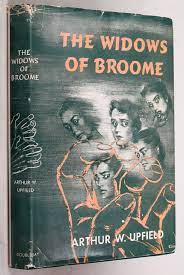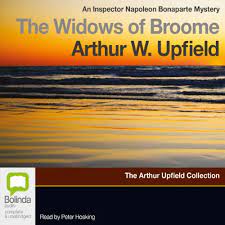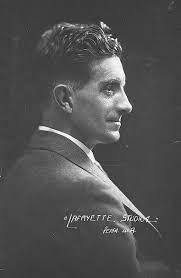The Widows of Broome (1950) by Arthur Upfield.
GoodReads meta-data is 256 pages rated 4.07 by 388 litizens.
Genre: krimi.
Verdict: a slow start but a fast finish.
Tagline: Bony to the rescue!

Broome, WA (population 800) of 1950, once the capital of the pearl industry, has not yet recovered from the war years, but it is peaceful and stable until… Murder!
Two widows are strangled one after another over a fortnight. No one seems much bothered though a considerable point is made that both were attractive women. Had they not been attractive, perhaps there would have been no investigation at all. What investigation is there? The local plod, noble chaps to a man, cannot both keep their pencils sharpened for inspection and find the wily culprit who failed to leave finger prints, a calling card, or a self-addressed stamped envelope. Perth homicide detectives fly in to irritate and annoy everyone, but fail to scapegoat a local aborigine or Asian: A strange omission for this time and place.

Pearling is a dangerous business, the Japanese bombed Broome, and many men went to war. Consequently, there are other widows in Broome who may be in peril. Their fears are barely noticed by plod who seems more focussed on a some cattle that have gone missing. Finding a murderer is just too hard.
There’s only one thing for it! Bony! That is, Inspector Napoleon Bonaparte (whose name is never explained) arrives incognito. As if! In his three-piece suit, with theatrical manners, dark skin, Siberian husky blue eyes, and superior attitude, he is dead obvious to one and all, who politely feign ignorance to humour his colossal ego. He soon finds his only intellectual equal in the environs is the town drunk. (Really.) These two form a partnership of sorts. The drunk, being furniture, is never noticed by the locals but, since he sleeps most nights on a bench in the street, he sees and hears much which he passes onto Bony who in return supports his alcoholism.
Broome of the time is described by the numbers, not with the imagery that Upfield sometimes conjures. But in the last third, when most of the scene is nocturnal in the bushes, Upfield is at his best in making the time of night, the place, and expectation all characters in the drama. The book is a time capsule of the attitudes, mores, and opinions of the day about women, children, religion, aboriginal, Asians, alcohol, manly men, effete intellectuals, and more. Take that or leave it.

When he started writing the Bony books, Upfield was travelling around Australia in a caravan working as a Jackeroo by day and typing his stories by kerosine lamp by night. His descriptions of many of these places, and the people who live there, are sometimes compelling, as is about the last third of this tale.
This is number thirteen in a series that started in 1928 and ended in 1966 to a total of nearly thirty. They are set wherever he parked that caravan.
Homework for our forthcoming trip to the Kimberley Coast.
